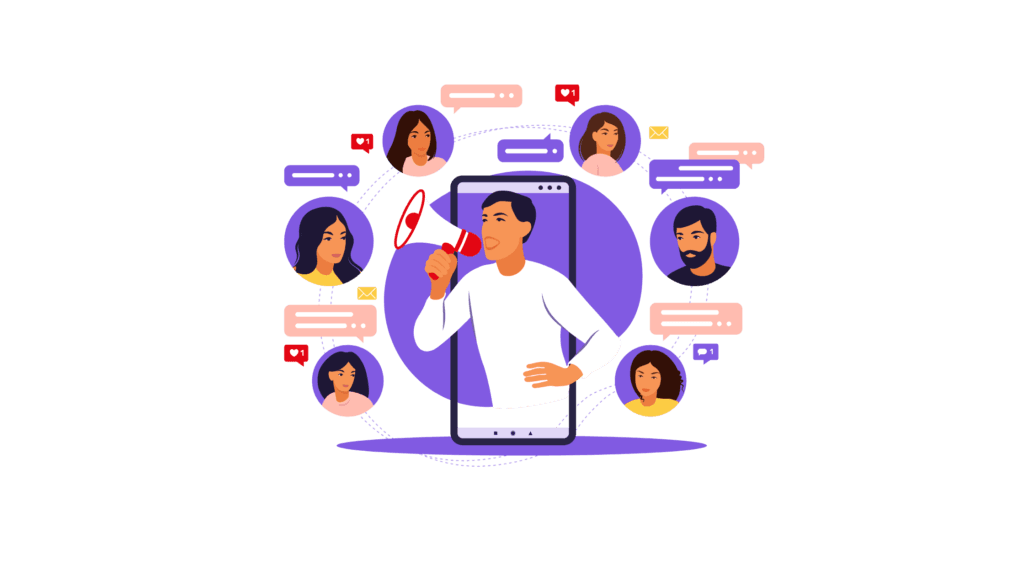Influencer marketing has emerged as a significant strategy in today’s digital landscape. With the rise of social media, influencers have become powerful voices that brands can collaborate with to reach specific audiences more authentically. Unlike traditional advertising, which often feels impersonal, influencer marketing leverages the established trust influencers have with their followers.
In this blog, we’ll explore actionable ways to use influencer marketing to build your brand. From understanding the types of influencers available to determining measurable goals, this guide covers each step. Whether your brand is just getting started or you’re looking to refine your influencer approach, these insights can help drive impactful results.
Let’s break down the essentials of how influencer marketing can be a growth tool for your brand.
Why Influencer Marketing Matters for Your Brand
Influencer marketing offers numerous benefits for brands looking to expand their reach and build credibility. Partnering with influencers can help your brand tap into new audiences without the hard-sell approach common in traditional advertising. Influencers are trusted by their followers, which means that when they endorse your brand, it comes with a built-in level of credibility that’s hard to match.
One key benefit is increased brand awareness. Collaborating with influencers can expose your products or services to their follower base, helping you reach people who may not have encountered your brand otherwise. Additionally, influencer marketing can drive engagement, as followers are often more likely to comment, share, and interact with content that feels authentic.
Investing in influencer partnerships is also more cost-effective than some forms of advertising, especially for small brands. Whether through micro-influencers with niche audiences or larger influencers with vast reach, influencer marketing provides a customizable approach to connect with potential customers.
Steps for Developing a Digital Marketing Strategy
Types of Influencers and Choosing the Right Fit
Choosing the right influencer for your brand involves understanding the various types available. Influencers are typically categorized into micro, macro, and mega influencers based on their follower counts and audience reach.
- Micro-Influencers have smaller followings, usually between 1,000 to 50,000. They’re known for their niche expertise and highly engaged followers. Micro-influencers are ideal for brands looking for authentic connections within specific markets.
- Macro-Influencers typically range from 50,000 to 500,000 followers and appeal to broader audiences. They are often well-established in their niche and can provide greater reach than micro-influencers.
- Mega-Influencers have massive followings of over 500,000 and are often celebrities or well-known personalities. While they can deliver extensive reach, mega-influencers come with higher costs and may not offer the same engagement rates as micro or macro-influencers.
When selecting influencers, consider both audience alignment and engagement levels. Collaborate with influencers who align with your brand values and can genuinely represent your products.
Strategies for Building Effective Influencer Partnerships
Creating an effective influencer marketing strategy starts with setting clear objectives. Before reaching out to influencers, determine your primary goals. Are you aiming to increase brand awareness, drive sales, or grow your social media following? Setting these goals helps guide your selection of influencers and shapes the campaign strategy.
Once your goals are clear, craft a brief for the influencers you choose to work with. This should outline your campaign’s message, desired content format, and key talking points. Allow some creative flexibility to ensure influencers can bring their unique voice to the collaboration.

Budgeting is also essential. While mega-influencers may offer significant reach, micro-influencers can often provide better engagement for a smaller investment. Align your budget with your campaign goals and prioritize influencers who offer high engagement rates in addition to follower numbers.
How to Measure the Success of Influencer Campaigns
Measuring influencer marketing success requires tracking key performance indicators (KPIs) that align with your campaign objectives. Engagement rate, reach, conversions, and website traffic are among the most common metrics to evaluate.
- Engagement Rate measures how followers interact with an influencer’s content. High engagement signals that the audience is invested in the influencer’s recommendations, which can positively impact your brand.
- Reach and Impressions help you understand the campaign’s visibility. Reach indicates how many unique users have seen the content, while impressions reveal how many times it was displayed.
- Conversions are critical if your goal is to drive sales. Track any promotional codes or links provided to measure how many followers take action based on the influencer’s endorsement.
Analyzing these metrics allows you to identify what’s working and refine future campaigns for better results.
Common Mistakes to Avoid in Influencer Marketing
While influencer marketing can be effective, there are common pitfalls to avoid. One major mistake is working with influencers solely based on follower count rather than engagement or brand alignment. High follower counts don’t always mean active, engaged audiences.
Another mistake is failing to establish clear goals and expectations. Without a clear campaign structure, results can be hard to measure, and influencers may not effectively communicate your brand’s message.
Lastly, be cautious of over-controlling the creative process. Influencers know what resonates with their followers, so trust their judgment while ensuring the brand’s messaging is maintained.
Avoiding these errors can help maximize the success of your influencer campaigns and build more impactful partnerships.
Conclusion: Influencer Marketing as a Tool for Growth
Influencer marketing offers brands a powerful way to connect with audiences authentically. By choosing the right influencers, setting clear goals, and tracking meaningful metrics, brands can tap into this marketing channel to foster growth.
In a competitive landscape, establishing real connections with potential customers is essential. Influencer marketing bridges this gap, creating relationships that are both credible and effective. With a well-crafted strategy, your brand can leverage the voice of influencers to not only boost awareness but also inspire lasting customer loyalty.
Embrace influencer marketing as part of a holistic brand strategy and watch as it transforms your reach and engagement.

